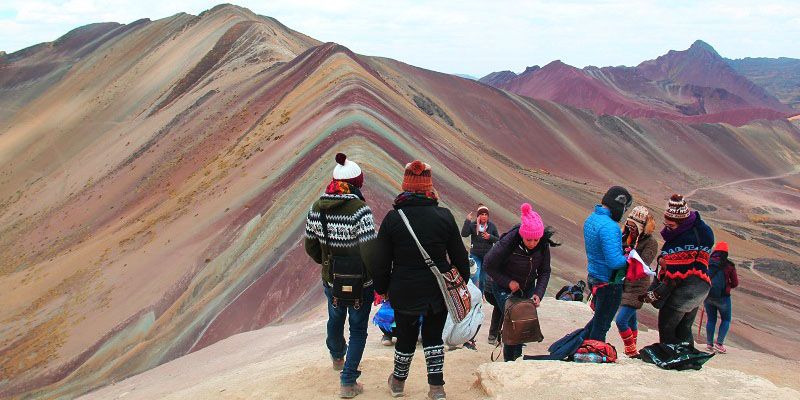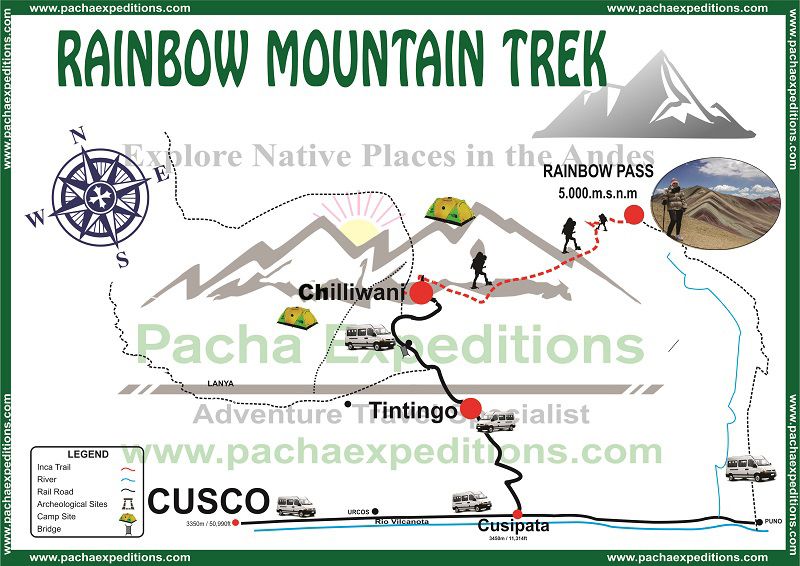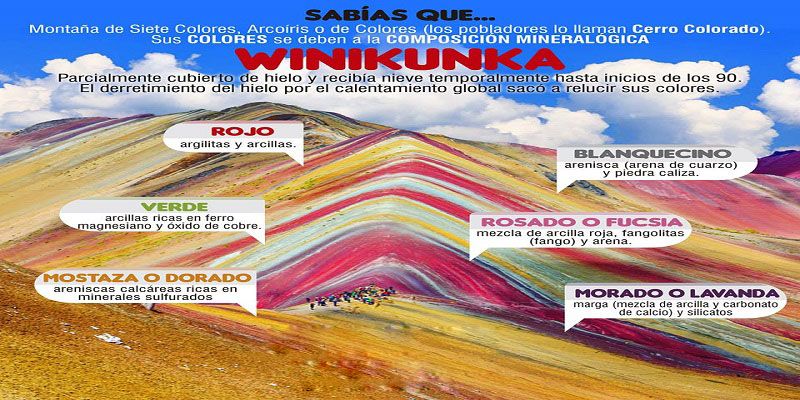Vinicunca or Winikunka, also called Mountain of Colors, Rainbow Mountain or Colorful Mountain (the locals call it Cerro Colorado), is a mountain within the Peruvian Andes, with an altitude of 5,200 meters above sea level.
It is on the way to the snowy Ausangate, the highest mountain within the Cusco region, in the Andes of Peru, Cusco Region, between the districts of Cusipata, Quispicanchi province, and Pitumarca, Canchis province.

In 2010, a process of tourist massification began, attracted by its series of stripes of various colors, this due to its mineralogical composition present on the slopes and summits. Today it has become the second most visited place, after the Inca city of Machu Picchu
Location of the Mountain.
The Red Valley, a path that connects Pitumarca with Vinicunca.
Leaving the city of Cusco, you drive along the Longitudinal Race of the Sierra del Sur Peruano (PE-3s) towards the town of Checacupe where you take the fork towards the town of Pitumarca, and from this town you go through the travel by a carriageable trail passing through various peasant communities such as Ocefina, Japura, Hanchipacha, until arriving at the community of Pampa Chiri, where the road ends and begins the walk of approximately 2 km to the Vinincunca pass, where you can see the Rainbow-shaped natural formation, considered the Mountain of Colors.
The second and most popular entrance is through the cusipata district, passing through the communities of Chilliwani, tintigo, where the road ends and start a 1.30 hike. hours, (8.km round trip)

Climate of the area.
All travelers agree that the best time of year to visit the Rainbow Mountain is from April to December, since it is a dry season and it is excellent to visit this beautiful place. You have to try to avoid days when it has rained (December, January and February) or times when a snowfall has fallen. Because you’ll only see a lot of nine
Vinicunca Mineralogical Composition.
According to research, the orographic composition of this place and the colors is as follows:
the pink color is due to red clay, fangolites (mud) and arilites (sand). The Whitish, for the quartz sandstone and marls, rich in calcium carbonate. Red is made up of clays (iron) and clays belonging to the upper tertiary. The green is due to the compound of phyllites and clays rich in magnesium ferro. The earthy brown is a product of fanglomerate composed of rock with magnesium belonging to the Quaternary era. And the mustard yellow color due to the calcareous sandstones rich in sulfur minerals.

